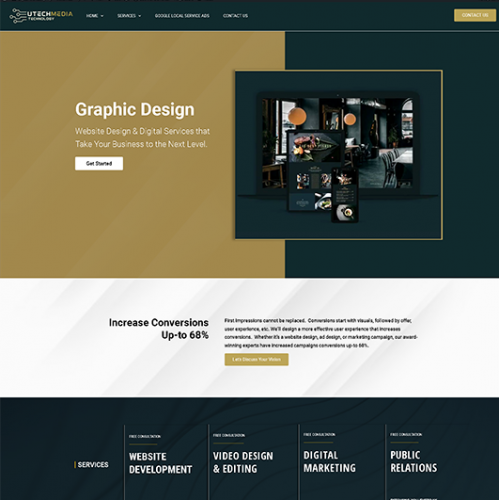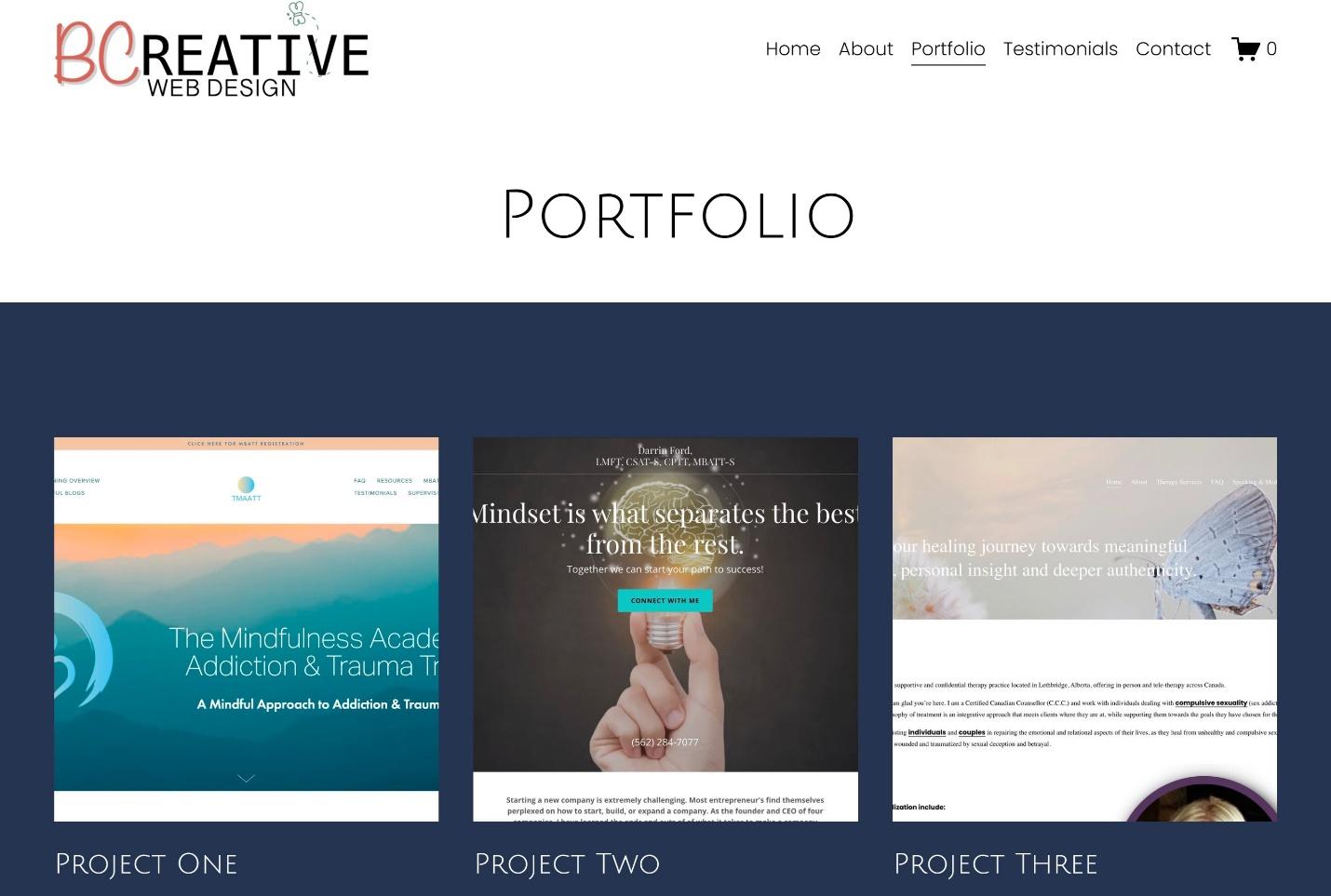Website Design for Startups: Key Elements for Growth
Wiki Article
Necessary Principles of Site Design: Developing User-Friendly Experiences
By concentrating on user needs and choices, designers can foster engagement and fulfillment, yet the effects of these concepts expand past plain performance. Understanding how they link can considerably impact a site's overall efficiency and success, motivating a closer examination of their individual roles and cumulative influence on individual experience.
Value of User-Centered Style
Prioritizing user-centered design is essential for producing reliable websites that satisfy the demands of their target audience. This approach positions the customer at the center of the style process, making certain that the web site not only works well however additionally reverberates with users on a personal level. By recognizing the users' goals, preferences, and actions, designers can craft experiences that promote interaction and contentment.
In addition, taking on a user-centered layout philosophy can bring about improved access and inclusivity, accommodating a diverse target market. By considering different user demographics, such as age, technological effectiveness, and cultural histories, designers can produce websites that are inviting and useful for all.
Inevitably, prioritizing user-centered layout not only boosts customer experience but can additionally drive key company end results, such as raised conversion rates and client commitment. In today's affordable digital landscape, understanding and prioritizing customer needs is an important success factor.
Intuitive Navigation Frameworks
Efficient internet site navigating is often an essential factor in boosting customer experience. User-friendly navigation structures enable customers to discover information promptly and effectively, reducing irritation and enhancing involvement. An efficient navigating menu must be straightforward, sensible, and regular across all web pages. This enables individuals to prepare for where they can find details material, therefore advertising a seamless surfing experience.To produce intuitive navigating, designers ought to focus on clarity. Tags need to be detailed and familiar to users, staying clear of jargon or uncertain terms. An ordered framework, with key classifications resulting in subcategories, can additionally assist users in understanding the relationship between various sections of the website.
In addition, incorporating aesthetic cues such as breadcrumbs can guide customers through their navigation path, enabling them to quickly backtrack if needed. The addition of a search bar also boosts navigability, granting users guide access to content without having to browse via numerous layers.
Responsive and Adaptive Designs
In today's digital landscape, ensuring that internet sites function perfectly throughout numerous devices is important for individual satisfaction - Website Design. Receptive and flexible layouts are two crucial strategies that enable this functionality, providing to the varied array of display sizes and resolutions that users might encounterReceptive designs employ fluid grids and versatile photos, permitting the website to immediately change its components based upon the screen measurements. This approach supplies a regular experience, where content reflows dynamically to fit the viewport, which is specifically beneficial for mobile users. By making use of CSS media inquiries, developers can produce breakpoints that optimize the format for different tools without the requirement for different styles.
Adaptive designs, on the various other hand, make use of predefined designs for particular screen dimensions. When an individual accesses the website, the server detects the gadget and serves the suitable design, making sure an enhanced experience for varying resolutions. This can cause much faster loading times and improved performance, as each design is tailored to the gadget's abilities.
Both flexible and receptive designs are essential for enhancing individual interaction and satisfaction, inevitably adding to the internet site's general efficiency in meeting its purposes.
Constant Visual Pecking Order
Establishing a regular aesthetic hierarchy is essential for assisting customers through a site's web content. This principle makes certain that details is presented in a manner that is both appealing and intuitive, permitting users to conveniently comprehend the material and navigate. A well-defined pecking order utilizes various layout aspects, such as dimension, shade, spacing, and comparison, to produce a clear difference between various sorts of material.In addition, constant application of these aesthetic signs throughout the internet site promotes experience and trust. Individuals can swiftly find out to acknowledge patterns, making their interactions more reliable. Ultimately, a strong visual hierarchy not just enhances customer experience however likewise improves general website functionality, encouraging much deeper engagement and promoting the wanted actions on an internet site.
Access for All Customers
Access for all individuals is a fundamental facet of internet site layout that ensures every person, no matter their impairments or capacities, can engage with and advantage from on-line web content. Creating with ease of access in mind includes implementing methods that accommodate diverse customer demands, such as those with aesthetic, acoustic, motor, click this or cognitive problems.One necessary guideline is to abide by the Internet Content Accessibility Standards (WCAG), which supply a framework for developing easily accessible digital experiences. This consists of making use of enough color contrast, providing message options for pictures, and ensuring that navigating is keyboard-friendly. Additionally, check utilizing receptive layout methods makes sure that web sites work successfully across various tools and display dimensions, further enhancing accessibility.
Another vital aspect is using clear, succinct language that avoids jargon, making material comprehensible for all customers. Engaging users with assistive technologies, such as screen viewers, requires cautious focus to HTML semantics and ARIA (Available Rich Web Applications) roles.
Inevitably, prioritizing accessibility not only fulfills lawful commitments yet also broadens the target market reach, promoting inclusivity and improving individual fulfillment. A commitment to accessibility mirrors a devotion to producing equitable electronic atmospheres for all customers.
Verdict
Finally, the necessary concepts of web site layout-- user-centered layout, intuitive navigation, responsive layouts, constant aesthetic power structure, and accessibility-- collectively contribute to the creation of easy to use experiences. Website Design. By prioritizing user needs and making sure that all individuals can successfully involve with the website, designers improve usability and foster inclusivity. These principles not only enhance customer satisfaction however also drive favorable business outcomes, inevitably demonstrating the essential value of thoughtful web site layout in today's digital landscape
These techniques give vital understandings right into individual expectations and discomfort points, allowing developers to customize the web site's functions and content appropriately.Effective website navigation is commonly an essential factor in enhancing user experience.Establishing a consistent aesthetic hierarchy is critical for directing users through a web site's content. Inevitably, a solid aesthetic pecking order not only boosts individual experience yet likewise boosts total website functionality, motivating deeper engagement and assisting in the wanted activities on a web site.
These principles not only enhance customer satisfaction yet additionally drive positive service results, eventually demonstrating the crucial significance of thoughtful internet site design in today's digital landscape.
Report this wiki page